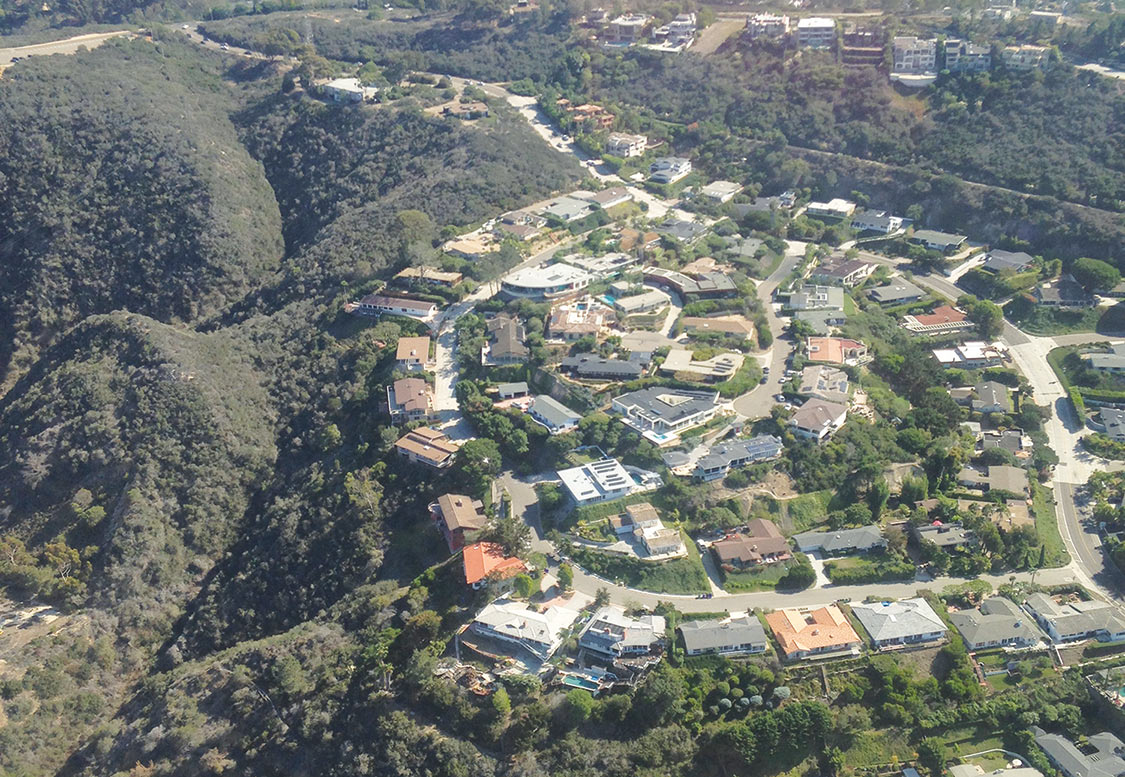
San Diego, California
Steep canyons of brush winding among San Diego’s dense housing and business developments provide welcome open space and a haven for native plants and wildlife. They also provide plenty of fuel for fast-moving wildfires.
Three of California’s largest wildfires have blown up in San Diego County where wildfire risk has only increased during the region’s prolonged drought. Rising temperatures and climate change will exacerbate the region’s risk in the future.
To protect property and public safety, the City of San Diego has developed several innovative strategies, profiled by CPAW and Headwaters Economics in this 2016 report to help other communities learn from their successes.
The City of San Diego adopted a comprehensive brush management policy that applies to any property with a habitable structure and vegetation. The landscaping policy requires activities such as weed control, vegetation thinning, and selected tree removal within 100 feet of all buildings to reduce the risk of spreading fire. Properties are inspected by city fire marshals; fines can be levied for non-compliance.
But fire officials affirm that public education is just as important as regulations. City fire officials meet with homeowners’ associations and attend workshops, hand out educational materials door-to-door, and educate property owners during site visits about the importance of wildfire safety through defensible space.
The city fire department also partners closely with the state’s Department of Forestry and Fire Protection (CAL FIRE) which works with local planning and fire departments to ensure that city and county planning documents consider wildfire hazards and community protection. The city has several objectives including reducing flammable vegetation while protecting sensitive habitat, conserving water, and controlling erosion.
Open space management, development codes, neighborhood access, defensible space standards – all are incorporated into local land use planning in San Diego.
The CPAW team has gleaned valuable lessons from San Diego’s approach. The ability to implement a comprehensive set of urban landscaping requirements may be a challenge in less regulatory-friendly communities. However, San Diego provides an example of what can be achieved when regulations are part of a community’s comprehensive wildfire protection plan.
Read more about San Diego’s successes in this report.
Snapshot
- Population (2015): 1,359,791
- Growth Rate (2000-2015): 11.1%
- Fuel Type: Chaparral and coastal sage scrub
Resources
- San Diego Municipal Code (Chap. 14, Article 2, Div. 4: Landscape Regulations)
- Brush Management Guide
- City of San Diego, Clarification of Brush Management Policy
- San Diego Brush Management and Weed Abatement
- Cal-adapt, Exploring California’s Climate Change Research
- CAL FIRE
- California Office of the State Fire Marshal
